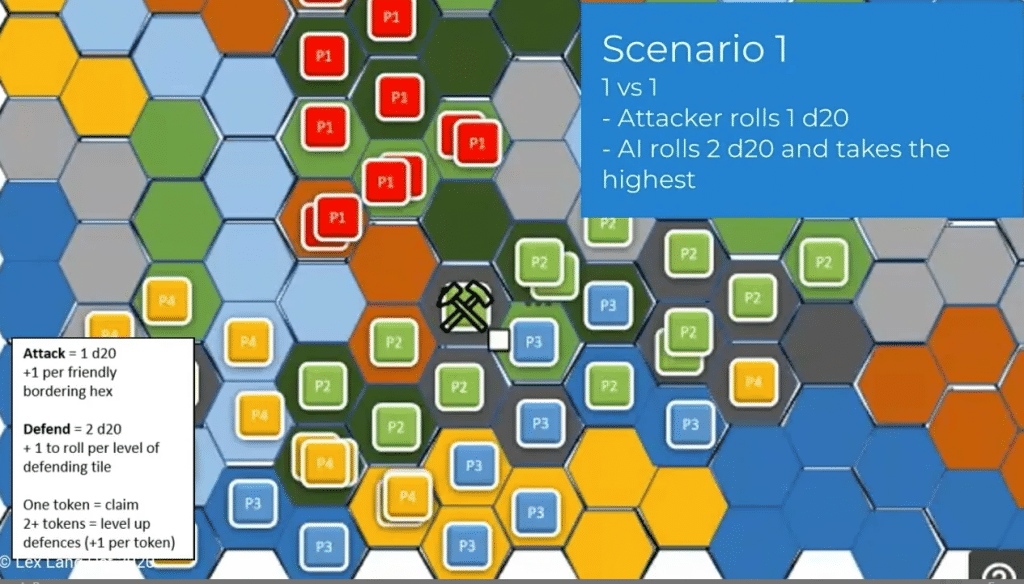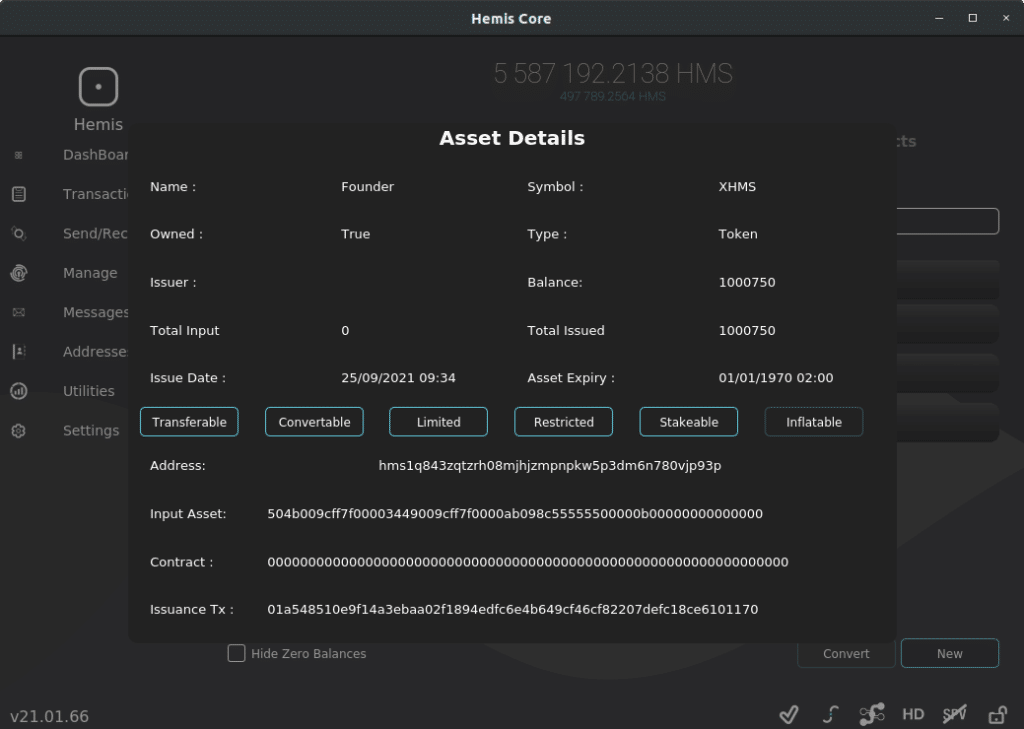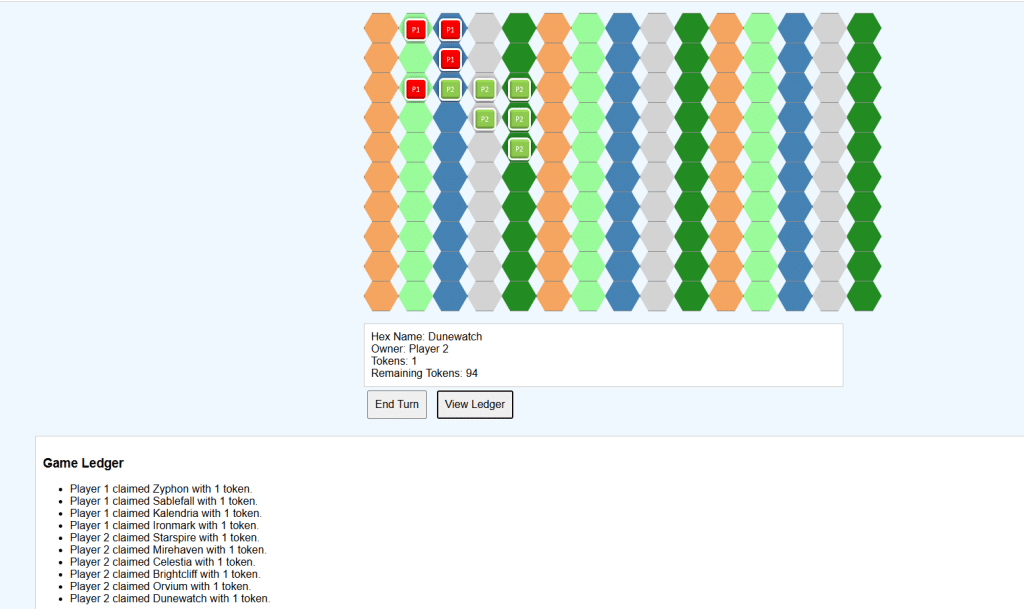The Hemis team didn’t rush into development. We spent years carefully designing PTX (Probabilistic Transactions), weighing every possibility to ensure that when we finally launched, we would offer a powerful yet simple feature that could transform blockchain gaming. PTX isn’t just a technical feat; it’s a tool that combines the strengths of random number generation, decentralization, and tokenization to unlock profound new opportunities in the world of games.
This article dives into the inspiration behind PTX, the philosophy that shaped it, and what lies ahead for the Hemis community as we introduce PTX-enabled gameplay concepts and applications.
A Simple Inspiration: Games for the World
PTX began as a vision in 2019. The concept was straightforward: divide the entire globe into hexagonal land parcels, and allow players to roll dice against the blockchain and each other to challenge for ownership of these parcels. Players would compete to expand their domains, each roll bringing them closer to becoming the global leader. The game was designed to be fully transparent and provably fair on-chain, with leaderboards, chat functions, and a little lighthearted trash talk to keep the competition lively.

During this phase of development, we created the first version of the Hemis wallet (based on Bitcoin Elements) which included many features such as token issuance, encrypted chat, smart contracts and identity management.
Though the initial concept was compelling, we quickly recognized that PTX could be so much more and the ancillary features a distraction. Instead of focusing on a single game, we could create a platform where people could tokenize and roll dice for anything—no complex coding, no smart contracts, just roll and play. PTX would be a tool, empowering anyone to create and engage in games on their own terms.
Expanding PTX’s Potential
As our weekly meetings continued, the potential of PTX continued to expand. We realized that PTX wasn’t just a system for rolling dice; it was a flexible foundation for entire categories of games, from board games to card games and beyond. This is where the true power of tokenization came into play. We understood that tokens could be more than static assets—they could become dynamic game pieces, each carrying unique metadata to describe its properties and behaviors.

With PTX, tokens could represent game pieces with distinct abilities or stats. Picture a deck-building game where each card in a player’s collection has specific attributes, from strength and agility to special abilities, allowing for strategic play on the blockchain. Similarly, tokens could represent characters or items in collectible card games, or be used as custom pieces in board games.
One of our early reference ideas was inspired by Top Trumps, where each card has unique stats, and players use these cards to compete in different categories. With PTX, these tokens would be completely verifiable on-chain, and battles would unfold without the need for third-party systems or smart contract coding. In this way, PTX enables a world of games where players own and control unique, evolving game pieces.
The Challenge of Head-to-Head Card Play
While a game like Top Trumps might seem simple, it presented a unique technical challenge: how could two players play cards against each other without either knowing the other’s choice in advance? In traditional play, each player sees the other’s card after they’re revealed. But on a decentralized blockchain, creating this kind of “blind” interaction required a new solution.
We solved this problem with a clever application of an established cryptographic method. Using secure cryptographic techniques, PTX allows players to commit to their card choices in a way that keeps them hidden until both players are ready to reveal. This preserves the fairness and excitement of head-to-head play, while ensuring that no player can see or influence the other’s choice before the reveal. It’s a subtle but essential feature that makes PTX flexible and fair for a range of game styles, from casual card games to strategic board games and dice rolls.
The Power of Simple Ideas and Transparent Play
Throughout 2019, we held dozens of focused meetings to refine the concept of PTX, collaborating with game developers, some from major studios, to ensure we were building a platform that would resonate with real players. We analyzed the challenges in other metaverse and blockchain projects, many of which were overly complex, aiming to build intricate virtual worlds that struggled to attract mass adoption. While these projects received substantial funding, we recognized a major gap: they overlooked the simple fun and broad appeal of classic board and card games.
So, rather than diving into the technical maze of virtual worlds, we chose to focus on the essentials. PTX was designed to be provably fair, transparent, and simple, aligning with our commitment to providing experiences people can trust. By grounding PTX in these principles, we made sure it’s accessible and easily understood, so that anyone can pick up a token, roll, and play.

Bringing PTX to Life
With the PTX release on the horizon, we’re ready to bring our community into the action. In the coming weeks, Hemis token holders and community members will see an exciting array of game concepts showcasing PTX’s potential. Expect articles that explore the gameplay possibilities of PTX, alongside real demonstrations and gameplay mechanics that will reveal the power and versatility of this unique feature.
